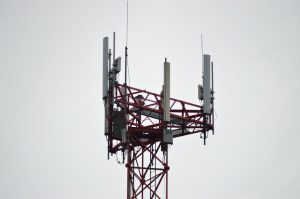
LEO Satellites: Revolutionizing Global Connectivity with Low Earth Orbit Technology
LEO satellites, or Low Earth Orbit satellites, are a type of satellite that operates at an altitude of around 160 to 2,000 kilometers above the Earth’s surface. This relatively low orbit allows LEO satellites to offer several advantages over traditional geostationary satellites, including lower latency, higher bandwidth, and improved connectivity. In this article, we will explore the benefits and applications of LEO satellites and how they are transforming the way we communicate and access data.
LEO satellites have been gaining popularity in recent years due to their ability to provide fast and reliable connections. One of the main advantages of LEO satellites is their low latency, which is the time it takes for data to travel from the Earth’s surface to the satellite and back. Traditional geostationary satellites have a latency of around 500-600 milliseconds, while LEO satellites have a latency of around 20-30 milliseconds. This makes LEO satellites ideal for applications that require real-time communication, such as video conferencing, online gaming, and virtual reality.
Applications of LEO Satellites
LEO satellites have a wide range of applications, including broadband internet, IoT connectivity, and Earth observation. They can provide high-speed internet access to remote and underserved areas, where traditional fiber optic cables are not available. LEO satellites can also be used to connect IoT devices, such as sensors and smart home devices, to the internet. Additionally, LEO satellites can be used for Earth observation, such as monitoring weather patterns, tracking climate change, and detecting natural disasters.
Several companies, such as SpaceX, OneWeb, and Amazon’s Kuiper Systems, are currently developing constellations of LEO satellites to provide global connectivity. These constellations will consist of thousands of satellites that will work together to provide high-speed internet access to any point on the globe. This will enable people in remote and underserved areas to access the internet and connect with the rest of the world.
Benefits of LEO Satellites
LEO satellites offer several benefits over traditional satellite systems, including lower latency, higher bandwidth, and improved connectivity. They are also more cost-effective and energy-efficient than traditional satellites. Additionally, LEO satellites are more resistant to interference and have a lower risk of signal loss due to their lower altitude and shorter signal path.
Another benefit of LEO satellites is their ability to provide backup connectivity during natural disasters or network outages. In the event of a disaster, LEO satellites can provide emergency connectivity to first responders and relief teams, enabling them to communicate and coordinate their efforts more effectively.
Challenges and Limitations of LEO Satellites
While LEO satellites offer several benefits, they also have some challenges and limitations. One of the main challenges is the high cost of launching and operating a constellation of LEO satellites. Additionally, LEO satellites have a shorter lifespan than traditional satellites, typically ranging from 5 to 10 years, which means they need to be replaced more frequently.
Another challenge is the risk of space debris and collisions. With thousands of LEO satellites in orbit, there is a higher risk of collisions and space debris, which can pose a threat to other satellites and spacecraft. To mitigate this risk, companies are developing technologies to track and remove space debris, as well as designing satellites with built-in collision avoidance systems.
Conclusion
In conclusion, LEO satellites are transforming the way we communicate and access data. With their low latency, high bandwidth, and improved connectivity, they offer several advantages over traditional satellite systems. While they have some challenges and limitations, the benefits of LEO satellites make them an attractive solution for a wide range of applications, from broadband internet to Earth observation. As the technology continues to evolve, we can expect to see even more innovative applications of LEO satellites in the future.



